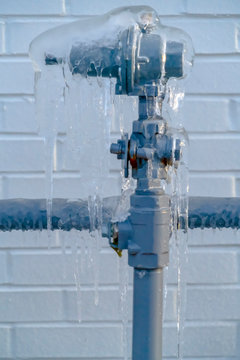Avoid Frozen Plumbing in Winter: Professional Strategies
Avoid Frozen Plumbing in Winter: Professional Strategies
Blog Article
Just about everyone may have their own unique thinking with regards to Preventing and dealing with frozen pipes.

Cold weather can damage your pipes, specifically by freezing pipes. Right here's how to prevent it from occurring and what to do if it does.
Intro
As temperatures decline, the threat of icy pipes increases, possibly causing expensive repairs and water damages. Comprehending how to stop frozen pipelines is essential for home owners in cold environments.
Avoidance Tips
Shielding vulnerable pipelines
Cover pipes in insulation sleeves or make use of warmth tape to shield them from freezing temperature levels. Concentrate on pipelines in unheated or external locations of the home.
Home heating strategies
Maintain indoor rooms properly heated, especially locations with pipes. Open cabinet doors to allow warm air to distribute around pipelines under sinks.
How to determine frozen pipes
Look for decreased water circulation from taps, uncommon odors or sounds from pipes, and noticeable frost on revealed pipes.
Long-Term Solutions
Architectural changes
Consider rerouting pipes far from outside wall surfaces or unheated areas. Include added insulation to attics, cellars, and crawl spaces.
Updating insulation
Buy premium insulation for pipelines, attic rooms, and walls. Appropriate insulation assists maintain constant temperature levels and decreases the danger of icy pipes.
Shielding Exterior Pipes
Garden hose pipes and outside taps
Detach and drain yard hose pipes before winter months. Install frost-proof faucets or cover exterior taps with shielded caps.
Comprehending Frozen Pipelines
What causes pipelines to freeze?
Pipelines ice up when subjected to temperature levels listed below 32 ° F (0 ° C) for extended durations. As water inside the pipelines freezes, it increases, taxing the pipeline walls and possibly causing them to rupture.
Threats and damages
Icy pipelines can lead to water system disruptions, building damage, and expensive fixings. Ruptured pipelines can flood homes and cause comprehensive structural damage.
Indicators of Frozen Pipes
Recognizing frozen pipelines early can prevent them from bursting.
What to Do If Your Pipelines Freeze
Immediate activities to take
If you suspect frozen pipelines, maintain faucets available to soothe pressure as the ice thaws. Use a hairdryer or towels soaked in hot water to thaw pipes slowly.
Conclusion
Avoiding frozen pipes needs positive procedures and fast actions. By understanding the reasons, indicators, and preventive measures, homeowners can secure their plumbing throughout cold weather.
5 Ways to Prevent Frozen Pipes
Drain Outdoor Faucets and Disconnect Hoses
First, close the shut-off valve that controls the flow of water in the pipe to your outdoor faucet. Then, head outside to disconnect and drain your hose and open the outdoor faucet to allow the water to completely drain out of the line. Turn off the faucet when done. Finally, head back to the shut-off valve and drain the remaining water inside the pipe into a bucket or container. Additionally, if you have a home irrigation system, you should consider hiring an expert to clear the system of water each year.
Insulate Pipes
One of the best and most cost-effective methods for preventing frozen water pipes is to wrap your pipes with insulation. This is especially important for areas in your home that aren’t exposed to heat, such as an attic. We suggest using foam sleeves, which can typically be found at your local hardware store.
Keep Heat Running at 65
Your pipes are located inside your walls, and the temperature there is much colder than the rest of the house. To prevent your pipes from freezing, The Insurance Information Institute suggests that you keep your home heated to at least 65 degrees, even when traveling. You may want to invest in smart devices that can keep an eye on the temperature in your home while you’re away.
Leave Water Dripping
Moving water — even a small trickle — can prevent ice from forming inside your pipes. When freezing temps are imminent, start a drip of water from all faucets that serve exposed pipes. Leaving a few faucets running will also help relieve pressure inside the pipes and help prevent a rupture if the water inside freezes.
Open Cupboard Doors
Warm your kitchen and bathroom pipes by opening cupboards and vanities. You should also leave your interior doors ajar to help warm air circulate evenly throughout your home.

I hope you enjoyed our excerpt on Helpful Tips to Prevent Frozen Pipes this Winter. Thank you for taking a few minutes to browse our piece of content. For those who enjoyed reading our blog posting please be sure to pass it around. I treasure reading our article about Helpful Tips to Prevent Frozen Pipes this Winter.
Estimate Report this page